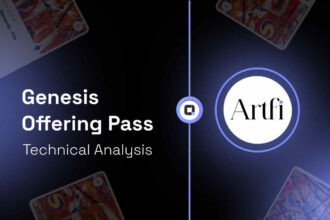Cryptocurrencies are becoming increasingly popular worldwide. The reason for this surge lies in the numerous benefits they offer compared to fiat currencies. However, this popularity is not without its peculiar vulnerabilities.
- What is Markets in Crypto Assets Regulation (MiCA)?
- Why Markets in Crypto Assets Regulation (MiCA) Is Crucial for the Crypto Ecosystem in the EU
- User Protection
- Curtailing Financial Crimes
- Boosting User Confidence and Trust
- Achieving Growth
- Legal Backing and Certainty for Companies
- Who Should Pay Attention to Markets in Crypto Assets Regulation (MiCA) Cryptocurrency Asset Regulation?
- Organizations excluded from the Regulation
- Types of Assets Covered by the Framework
- The Type of Assets Not Covered by This Framework
- Key Points in Market in Crypto Assets Regulation (MiCA)
- One License Fits All
- Publication of Comprehensive White Paper
- A Complete Ban of Algorithm-backed Stable Coins And Adoption of Strict Rules for Asset-backed Stablecoins
- New Requirements and Obligations for Crypto Assets Service Providers and Businesses
- Conclusion
- Frequently Asked Questions (FAQs)
The internet is replete with news about crypto scams, hacks, and sudden service provider issues. Consequently, several governments have taken a stern stand against cryptocurrencies, while others acknowledge the benefits but opt to establish rules and regulations to guide operations within their country or region.
To guide the crypto world, protect investors, and ensure transparency, the European Union unanimously crafted and approved the Markets in Crypto Assets Regulation (MiCA). This framework aims to capitalize on crypto opportunities while creating a secure environment for investors in the EU region.
In this article, you will gain in-depth information about the Markets in Crypto Assets Regulation (MiCA).
What is Markets in Crypto Assets Regulation (MiCA)?
The Markets in Crypto Assets Regulation, also known as MiCA, constitutes a regulatory framework formulated by the European Union to oversee Crypto Assets within its jurisdiction. This regulation focuses on crypto assets not covered by existing regulations. The primary objectives of this framework include:
- Establishing clear rules for Crypto Assets service providers and businesses operating in the European Union.
- Ensuring the regulation of unregulated crypto assets within the European Union.
- Creating a comprehensive framework that outlines rules for the use of crypto assets and the operations of crypto asset providers in the European Union.
Why Markets in Crypto Assets Regulation (MiCA) Is Crucial for the Crypto Ecosystem in the EU
Markets in Crypto Assets Regulation (MiCA) holds significant importance for several reasons:
User Protection
The absence of clear rules in the crypto ecosystem poses risks to users, holders, and investors. Markets in Crypto Assets Regulation (MiCA) is crucial for the comprehensive protection of crypto asset holders.
Curtailing Financial Crimes
The lack of regulation allows malicious users to exploit cryptocurrencies for financial crimes. Establishing a regulatory framework is essential to curtail and reduce instances of financial crimes associated with crypto asset service providers and businesses.
Boosting User Confidence and Trust
In an environment rife with stories of crypto hacks and scams, users may hesitate to engage with crypto assets due to fear.
Regulation, especially from a reputable public body like Markets in Crypto Assets Regulation (MiCA), helps boost user confidence and encourages trust in the ecosystem.
Achieving Growth
Crypto assets play a pivotal role in economic development, offering innovative solutions to the financial system. However, growth is hindered if users are hesitant to conduct transactions due to fears of scams. MiCA’s legal backing provides assurance, enabling users to leverage the opportunities for economic growth.
Legal Backing and Certainty for Companies
Operating in a non-regulatory environment leaves companies using crypto assets uncertain about the treatment of their assets in other EU states. Markets in Crypto Assets Regulation (MiCA) addresses this by providing legal backing and certainty, encouraging business expansion and digital innovation using crypto assets.
Who Should Pay Attention to Markets in Crypto Assets Regulation (MiCA) Cryptocurrency Asset Regulation?
Those who need to closely monitor the regulatory framework include Web3 businesses and crypto asset service providers offering services such as order execution for clients, transfer services for crypto assets on behalf of clients, portfolio management, and operation of a crypto asset trading platform. They fall into the following categories:
- Crypto exchanges that facilitate both crypto-to-crypto and crypto-to-fiat transactions.
- Custodial wallets.
- Crypto trading platforms enable crypto-to-crypto and crypto-to-fiat transactions.
- Crypto asset advisory firms and portfolio managers.
Organizations excluded from the Regulation
International organizations such as the International Monetary Fund and the Bank for International Settlements are exempt from the regulation.
The purpose of the regulation is to ensure the protection of investors, financial stability, and the smooth operation of payment systems.
Public international organizations like these do not pose any risks to the factors mentioned in the preceding sentences; therefore, they are excluded.
Types of Assets Covered by the Framework
- Electronic Money Tokens: These are crypto assets backed by a single fiat currency.
- Asset-Referenced Tokens: These are crypto assets backed by one or more official currencies.
- Other crypto assets are neither electronic tokens nor asset-referenced tokens, like utility tokens.
The Type of Assets Not Covered by This Framework
- Crypto assets that are identified as financial instruments.
- Crypto assets that are not fungible with other crypto assets.
- Crypto assets that qualify as deposits as defined in Directive 2014/49/EU of the European Parliament and of the Council. This includes structured deposits as defined in Directive 2014/65/EU.
- Crypto assets that are regarded as funds as defined in Directive (EU) 2015/2366 of the European Parliament and of the Council.
- Crypto assets that are regarded as securitisation positions as defined in Regulation (EU) 2017/2402 of the European Parliament and of the Council.
- Crypto assets that are regarded as non-life or life insurance contracts, pension products or schemes and social security schemes.
- Crypto-assets representing services or physical assets that are unique and non-fungible, such as product guarantees or real estate.
- Digital assets like Loyalty schemes that cannot be transferred to other holders are excluded from the regulation.
Crypto based startups like Ripple, the company behind XRP token are looking forward to embracing Markets in Crypto Assets Regulation (MiCA) going forward:
Key Points in Market in Crypto Assets Regulation (MiCA)
One License Fits All
Previously, crypto service providers had to acquire licenses in each country they wanted to operate. This is not only strenuous but, most times, limiting, as not every government is open-minded towards crypto.
However, all that is changing with Markets in Crypto Assets Regulation (MiCA). According to the framework, licensed crypto service providers and businesses can operate and provide their services to all EU nations.
They do not have to obtain a license from each country. Markets in Crypto Assets Regulation (MiCA) has empowered them with a passport to transact business across the bloc.
Publication of Comprehensive White Paper
Projects planning to issue tokens are required to publish a comprehensive white paper. The white paper must be written according to MiCA’s guidelines. Also, it must warn users of the potential risks involved with holding the token.
A Complete Ban of Algorithm-backed Stable Coins And Adoption of Strict Rules for Asset-backed Stablecoins
Markets in Crypto Assets Regulation (MiCA) placed a complete ban on algorithm-backed stablecoins in the European Union.
It also provided a comprehensive list that contains all the rules that asset-backed stablecoins must adhere to for them to be legally accepted in the region.
New Requirements and Obligations for Crypto Assets Service Providers and Businesses
To achieve the major aims of Markets in Crypto Assets Regulation (MiCA), a couple of new rules were enacted for crypto asset service providers and businesses.
For instance, crypto asset service providers and businesses are required to have an office in an EU country and have at least one director resident in the chosen EU country.
Also, they are expected to provide fair, clear, not misleading information to users, implement anti-money laundering practices, and adhere to laid-down rules created for the prevention of market abuse.
Conclusion
Markets in Crypto Assets Regulation (MiCA) is designed to provide a safe crypto environment for investors in the EU and ensure the compliance of Web3 businesses with regulations. Crypto asset service providers and businesses must pay adequate attention to the framework and adjust where necessary.
This way, the framework will favor them rather than work against them, as is the case with several crypto-related regulations.
Aside from protecting investors and creating a safe space for the operation of crypto assets in the European Union, Markets in Crypto Assets Regulation (MiCA) also serves as an example for other regions of the world to follow.
The European Union is the first major bloc in the world to create and adopt a comprehensive regulatory framework guiding the crypto ecosystem. Instead of banning cryptocurrencies, a comprehensive regulatory framework can be established and enacted.
This approach allows the region to harness the benefits of decentralized ledger technologies while ensuring a safe playing ground for users and adherence to anti-money laundering practices.
Frequently Asked Questions (FAQs)
What Is Mica Regulation in the Cryptocurrency Market?
MiCA, or Market in Crypto Assets Regulation, is a regulatory framework in the European Union designed to govern crypto service providers and businesses. It introduces rules for licensing, and issuance of tokens, and sets standards for stablecoins.
How Does Mica Simplify Licensing for Crypto Service Providers?
Markets in Crypto Assets Regulation (MiCA) streamlines the licensing process by enabling licensed crypto service providers to operate across all EU nations without obtaining individual licenses. This “one license fits all” approach facilitates easier cross-border transactions.
What Are the Requirements for Publishing a White Paper under Mica?
Projects planning to issue tokens must publish a comprehensive White Paper adhering to MiCA’s guidelines. This document should not only outline project details but also warn users about potential risks associated with holding the token.
What Stablecoins Are Prohibited under Mica?
Markets in Crypto Assets Regulation (MiCA) imposes a complete ban on algorithm-backed stable coins within the European Union. It also establishes strict rules that asset-backed stablecoins must adhere to for legal acceptance in the region.
What New Obligations Do Crypto Assets Service Providers Have under Mica?
Markets in Crypto Assets Regulation (MiCA) introduces new obligations, including having an office in an EU country, having at least one director resident in the chosen EU country, providing clear information to users, implementing anti-money laundering practices, and adhering to rules preventing market abuse.
How Does Mica Contribute to Investor Protection and Market Stability?
Markets in Crypto Assets Regulation (MiCA) aims to ensure the protection of investors and financial stability by implementing rules that govern the operation of crypto service providers and businesses. This includes transparency measures, risk warnings, and anti-money laundering practices.



















